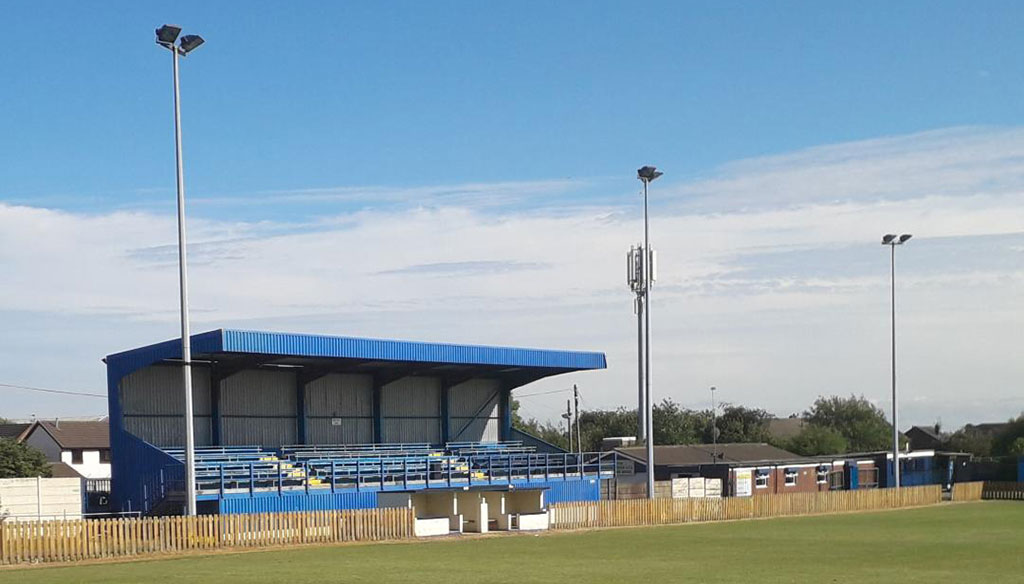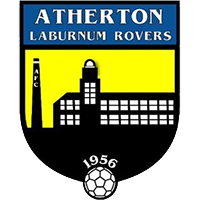
Emblematically Speaking - Atherton LR
Mon 5th March 2018 | Atherton LR | By Stewart Taylor
This week, we get to learn a new word and that word is millrind.
Those involved in the milling industry may already know what a millrind is, but for the rest of us (including me) a definition may be useful.
A millrind is an iron support fixed across the hole in the upper millstone of a grist mill.
Mention of the term grist mill may expect that to be a prompt to eulogise at length about the role of a grist mill in the beer making process. However, space constraints don’t allow me to do that, much to the relief of many I’m sure.
What we are talking about here is the presence of a millrind in the crest of the Atherton Coat of Arms and to see what one looks like it rests under the raised claw of the sparrowhawk – of which more later.
The device is used here, along with the shuttle which appears under the sparrowhawk, to represent the cotton and engineering industries which, along with coal, dominated the town.
If we move to the shield we see that the coal industry is not forgotten as it is represented by the two black diamonds. The significance of coal mining to Atherton and the immediate surrounding area cannot be underestimated.
Some was what we might generally call “open cast” but some quite early “deep pit” mines were dug here. With shafts as deep as 1,800 feet (550 metres in this new metric Britain of ours), mining was something of a challenge to say the least but the quality of the coal was high and the prices commensurate with that quality. The era of deep pit mining came to an end in 1966 with the closure of Chanters Colliery.
The remaining device on the shield may be something of a challenge to identify but have a go, and if you come to the answer that the device in the red stripe (bend) is the leg of a lion then full marks indeed.
It is at this point that the story goes back in time and, as we have seen many times in this series of articles, wealthy and influential families have played a large part in the early history of many of our towns. The lion’s leg and the aforementioned sparrowhawk represent the Powys and Atherton families respectively.
These two families were joined by marriage in 1797 when Thomas Powys, 2nd Baron Lilford, married the heiress of the Athertons, Henrietta Maria, of Atherton Hall thus the Atherton Estate passed into the hands of the Powys family.
However, the newly married couple did not live in Atherton Hall, preferring the seat of the Powys family at Lilford Hall in Northamptonshire.
It is perhaps of interest to note that Atherton Hall no longer exists as it was demolished in 1824. Nothing unusual there we may think until we get to know that the part of Atherton in which the hall stood was incorporated into Leigh in 1894.
Some outbuildings, which remained after the demolition of the hall, are private property and are still known as Atherton Hall although the estate is now known as Lilford Park (Leigh) hence cementing yet further the links between the two families which goes back to that wedding in 1797.
The arms were granted to the town of Atherton in 1951 and, as we have seen before, considerable thought has gone into the choice of devices to represent the town from the Middle Ages up to the date of incorporation.
The motto 'Consilio et Prudentia' (Latin) is also well considered in that it translates into English as ‘By counsel and by wisdom’.
Atherton Laburnum Rovers were founded in 1956, not long after the granting of the Coat of Arms, although the name of the town of Atherton was not incorporated into the name of the football club until they were obliged to in 1980.
 Emblematically Speaking - Atherton LR
Emblematically Speaking - Atherton LR
Mon 5th March 2018 | Atherton LR
By Stewart Taylor

This week, we get to learn a new word and that word is millrind.
Those involved in the milling industry may already know what a millrind is, but for the rest of us (including me) a definition may be useful.
A millrind is an iron support fixed across the hole in the upper millstone of a grist mill.
Mention of the term grist mill may expect that to be a prompt to eulogise at length about the role of a grist mill in the beer making process. However, space constraints don’t allow me to do that, much to the relief of many I’m sure.
What we are talking about here is the presence of a millrind in the crest of the Atherton Coat of Arms and to see what one looks like it rests under the raised claw of the sparrowhawk – of which more later.
The device is used here, along with the shuttle which appears under the sparrowhawk, to represent the cotton and engineering industries which, along with coal, dominated the town.
If we move to the shield we see that the coal industry is not forgotten as it is represented by the two black diamonds. The significance of coal mining to Atherton and the immediate surrounding area cannot be underestimated.
Some was what we might generally call “open cast” but some quite early “deep pit” mines were dug here. With shafts as deep as 1,800 feet (550 metres in this new metric Britain of ours), mining was something of a challenge to say the least but the quality of the coal was high and the prices commensurate with that quality. The era of deep pit mining came to an end in 1966 with the closure of Chanters Colliery.
The remaining device on the shield may be something of a challenge to identify but have a go, and if you come to the answer that the device in the red stripe (bend) is the leg of a lion then full marks indeed.
It is at this point that the story goes back in time and, as we have seen many times in this series of articles, wealthy and influential families have played a large part in the early history of many of our towns. The lion’s leg and the aforementioned sparrowhawk represent the Powys and Atherton families respectively.
These two families were joined by marriage in 1797 when Thomas Powys, 2nd Baron Lilford, married the heiress of the Athertons, Henrietta Maria, of Atherton Hall thus the Atherton Estate passed into the hands of the Powys family.
However, the newly married couple did not live in Atherton Hall, preferring the seat of the Powys family at Lilford Hall in Northamptonshire.
It is perhaps of interest to note that Atherton Hall no longer exists as it was demolished in 1824. Nothing unusual there we may think until we get to know that the part of Atherton in which the hall stood was incorporated into Leigh in 1894.
Some outbuildings, which remained after the demolition of the hall, are private property and are still known as Atherton Hall although the estate is now known as Lilford Park (Leigh) hence cementing yet further the links between the two families which goes back to that wedding in 1797.
The arms were granted to the town of Atherton in 1951 and, as we have seen before, considerable thought has gone into the choice of devices to represent the town from the Middle Ages up to the date of incorporation.
The motto 'Consilio et Prudentia' (Latin) is also well considered in that it translates into English as ‘By counsel and by wisdom’.
Atherton Laburnum Rovers were founded in 1956, not long after the granting of the Coat of Arms, although the name of the town of Atherton was not incorporated into the name of the football club until they were obliged to in 1980.


